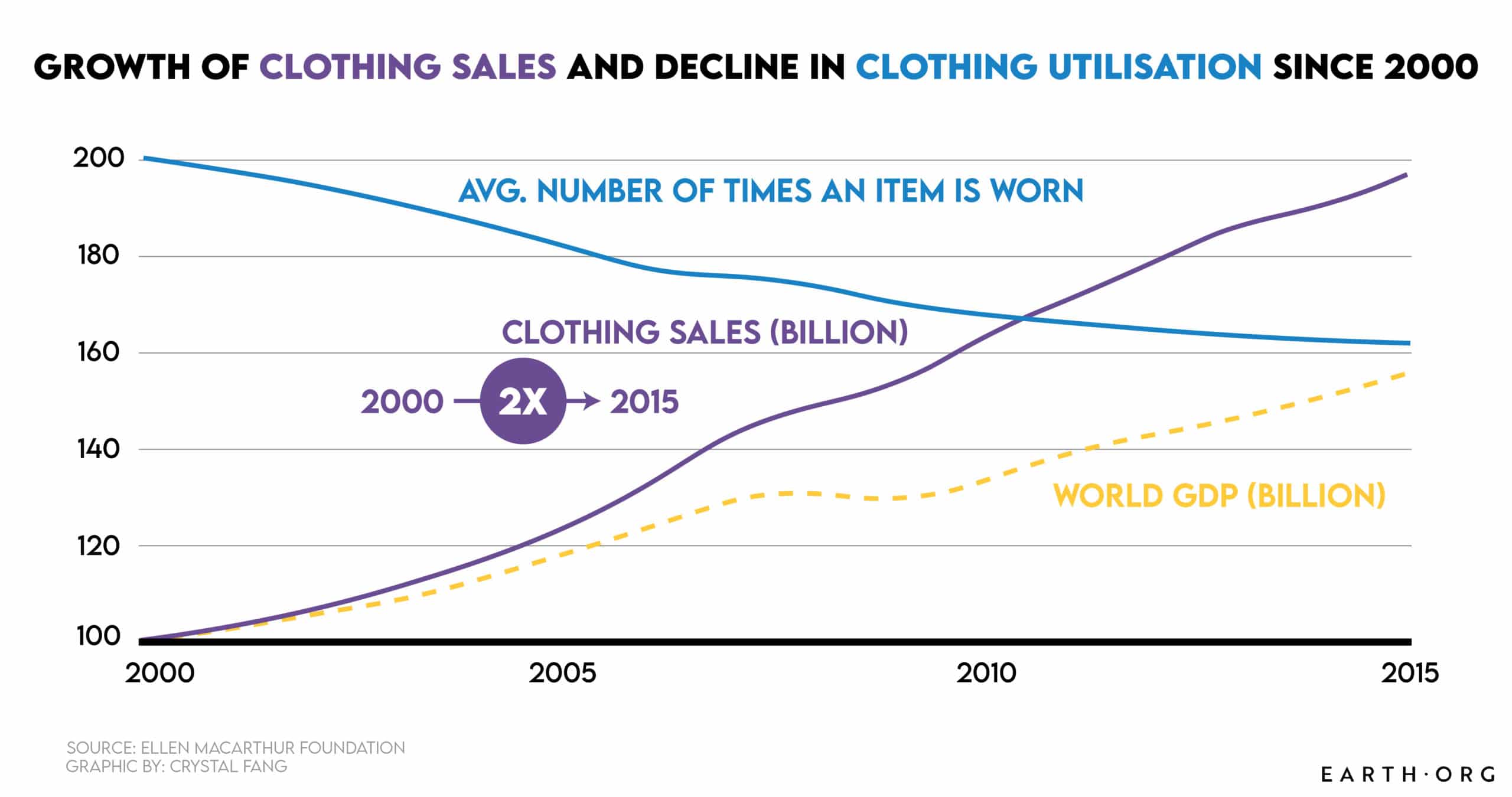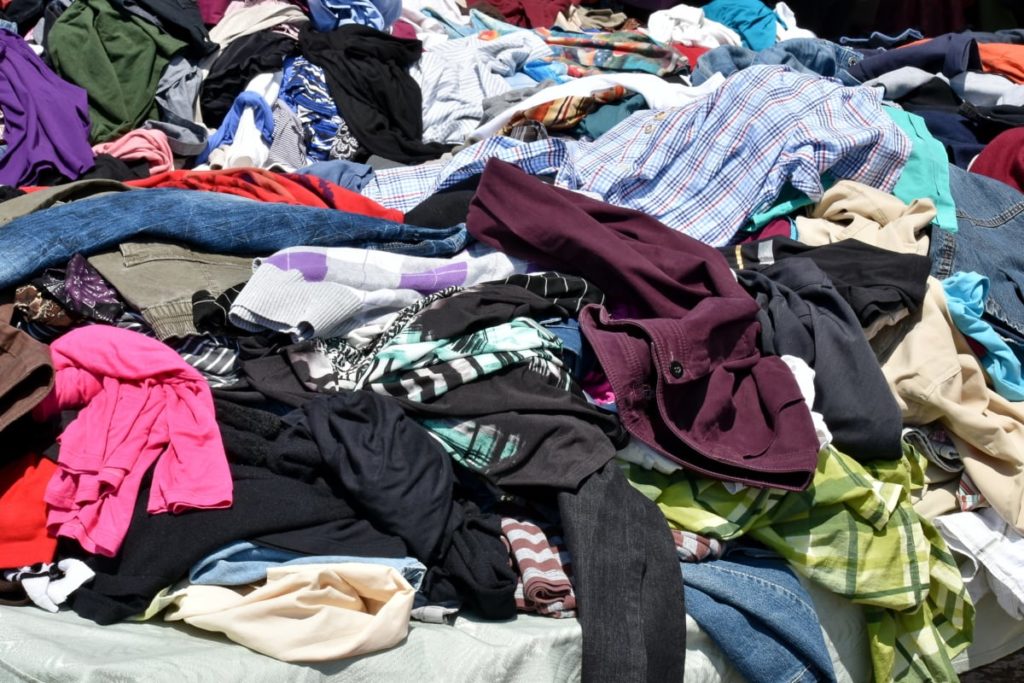Fast fashion is a term used to describe cheap and low quality clothing that are rapidly produced and are cycled in and out the market quickly to meet new trends.
—
People around the world have increasingly become more aware and conscious of their carbon footprint and impacts on the environment, especially in light of global warming and the worsening effects of the climate crisis. The fashion industry, and in particular, fast fashion companies, have come under the spotlight for its contribution to global waste and climate change. But what exactly is fast fashion?
What Is Fast Fashion?
The term fast fashion refers to a large sector of the fashion industry whose business model relies on cheap and speedy production of low quality clothing, which gets pumped quickly through stores in order to meet the latest and newest trends.
The term was first coined by the New York Times in the early 1990s when Spanish apparel giant Zara arrived in New York, to describe the brand’s mission to take only 15 days for a garment to go from the design stage to being sold in stores. Some of the biggest and most notable fast fashion brands in the world include the likes of UNIQLO, Forever 21 and H&M.
The fast fashion business model involves rapid design, production, distribution and marketing, allowing brands and retailers to pull large quantities of greater product variety and allow consumers to get more style and product differentiation at a low price.
However, a system that relies on such cheap and rapid production only encourages excessive consumption as people are inherently attracted to low priced goods, many of which are slaves to the latest trends. For individual consumers, it is also easier and more economic to snatch up cheap clothing that have short life spans compared to splurging on high quality, long lasting items that will very shortly fall out of popularity.
And therein lies the problem. The fast fashion model drives consumers to continuously purchase cheap clothing and discard them quickly due to its poor quality, which are significantly more susceptible to wear and tear. This cycle of buying and discarding creates a huge environmental problem, with the world accumulating mountains of textile and clothing waste every day, most of which are not biodegradable.
You might also like: Fast Fashion: Its Detrimental Effect on the Environment
Why Is Fast Fashion Bad?
Globally, an estimated 92 million tonnes of textiles waste is produced every year and that number is expected to soar up to 134 million tonnes a year by 2030.

You might also like: The 9 Biggest Fast Fashion Statistics
Despite this, fast fashion companies and retailers have no real interest or incentives to change its current business model when it’s proven to be so profitable so far. Furthermore, manufacturers cut production costs even more by using synthetic and chemically treated materials rather than organic ones in order to lower prices and encourage more consumption.

Much like the argument to switch to a plant-based diet to help reduce deforestation and carbon emissions, it is up to consumers to actively choose to avoid fast fashion brands, and to support more sustainable and socially conscious labels in order to alleviate the devastating environmental impacts of the industry.
Featured image by: Photo by Bicanski/Pixnio
This story is funded by readers like you
Our non-profit newsroom provides climate coverage free of charge and advertising. Your one-off or monthly donations play a crucial role in supporting our operations, expanding our reach, and maintaining our editorial independence.
About EO | Mission Statement | Impact & Reach | Write for us














